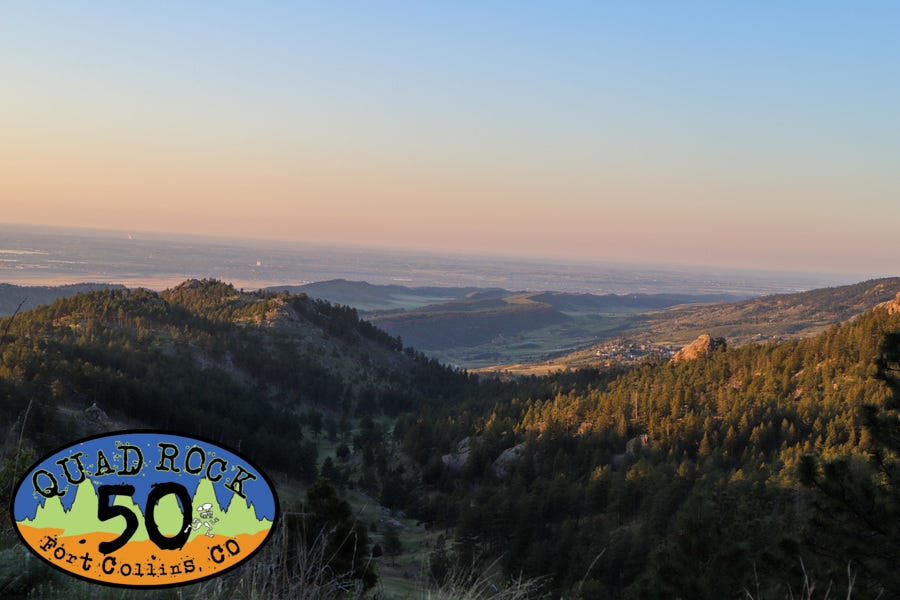
“I just looked at the Quad Rock results,” my ultrarunning friend texted on Monday morning. “Are you OK?”
She was alarmed I had stopped at mile 43 of the 50-miler.
“Hi! Yeah, thanks for checking in,” I replied. “It was actually a really good 12-hour training!”
I had deliberately done a cost/benefit analysis at the top of the Quad Rock 50’s final peak, at the final aid station, and decided I’d do more harm than good by descending and traversing the last seven miles on an ankle I had sprained while also coping with stressed lungs that gave me coughing fits. Plus, both knees were protesting. It was OK to say “enough.”
Twelve hours was twice the time on feet I had done in this training block since February, following a three-month injury, so I was pleased—yet humbled.
I have a lot of work to do to get ready for the Hardrock Hundred, which is only eight weeks away.
I knew I needed to jump back into training this week, rather than take a week or more for recovery if I fully trashed my body on Saturday. Since the 50-miler was purely for training and practice, it made sense to drop when I did, when I had reaped the benefit of the practice but before I did further damage.
So now what?
Project Durability
I’ve been thinking a lot about the concept of “durability” in ultrarunning and the saying “you’re only as strong as your weakest link.” I need to fortify my durability and understand—then troubleshoot—the weak links. Thankfully, Saturday’s 43 miles showed me where I’m prone to fatigue and break. By sharing my experience, I hope to share strategies that could help you too.
The idea of “durability” in endurance sports is basically a reframing of ways to understand and minimize fatigue’s slowdown and breakdown. (This article provides a good overview, and Jason Koop has also recorded a couple of podcasts on the topic, like this one.) An expert who has studied durability in endurance athletes, Nicolas Berger, PhD, defines it as “the overall resilience and ability of an athlete’s body to withstand and recover from the demands of ultra-distance running. It encompasses physiological and psychological aspects that enable sustained performance over prolonged periods” (emphasis added).
Durability is different and arguably more important than endurance for extra-long ultras. Whereas endurance enables you to run well for a given length of time or distance, say a marathon or 50K, durability enables you to combat fatigue, muscle breakdown, and other stressors to avoid a significant slowdown or full-on shutdown for even longer distances, and it helps you recover better to keep going the next day. Durability is not about being fast or having high VO2 max; it’s more about having a body that can sustain a steady effort.
My lack of durability became evident in the second half of Saturday’s Quad Rock 50. The first 6.5 hours—not coincidentally, the length of my longest training run so far this year—went quite well (except for a rolled ankle at mile 23, more on that below), and I reached the route’s halfway point about when I hoped to, well ahead of the cutoff time. I was practicing a steady pace and the “systems management” (i.e. fueling/hydration, thermoregulation, mental positivity) that I will need for Hardrock, so I was not trying to run fast or competitively; I was trying to settle into a smart tortoise pace and prevent problems.
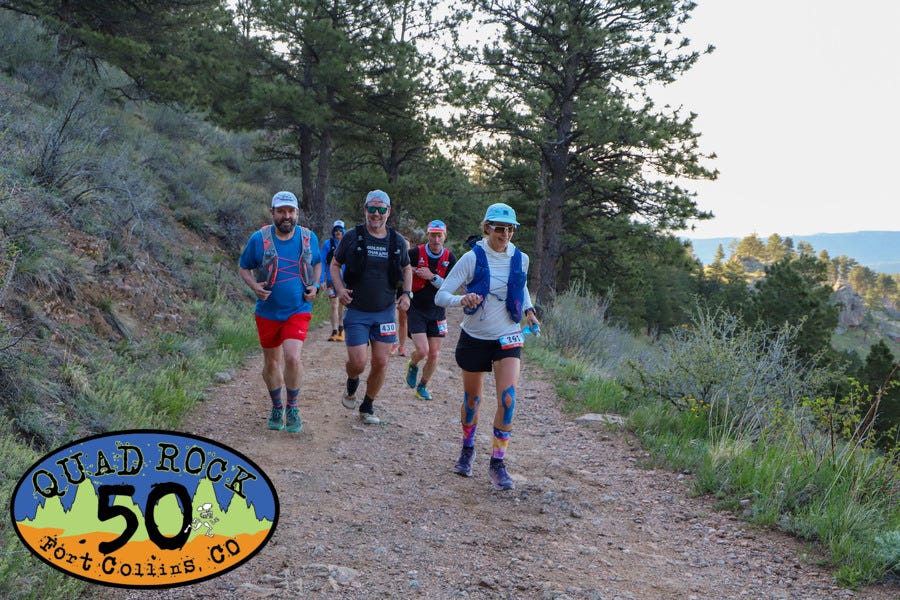
After seven hours, however, I began feeling hurt and tired, and I slowed down a lot. Because of my relatively late start to training due to last winter’s injury, I did not have the training base of weekly volume for a strong 50 miles.
These are the weak links that surfaced:
respiratory stress: for the past three weeks, I’ve had a persistent dry cough with a tickle in my throat, leftover from a cold, as well as raspy lungs that also trigger coughing when I try to breathe deeply. I chronically experience bronchospasm and am prone to what’s essentially an overuse injury of the lungs, creating inflammation in the lung tissue from prolonged heavy hard breathing in the dry high-altitude air. It gets worse this time of year when cottonwood pollen flies. I was coughing horribly and unable to catch my breath at times Saturday, even though I used an albuterol rescue inhaler.
loosey-goosey ankles: once I turn an ankle, it’s prone to give out repeatedly. I had a bad fall with a mild sprain at mile 23 (a cyclist distracted me saying, “there’s a rattlesnake in the bush up ahead,” so I looked up startled and caught a rock with my toe). I had to walk for about a half mile until I could run on it again. But the experience made me cautious and stiff-legged for the remainder of the run, and the ankle remained swollen for two days following.
achy knees: my “bad” left knee has a double problem of degenerated cartilage under the patella, and lateral knee pain from last winter’s injury of a partially torn IT band where it attaches to the head of the tibia. However, my “bad” knee has been behaving really well and barely talked to me on Saturday! My “good” right knee has a new problem of a strained meniscus that causes pain in the back of the knee. It was mostly OK Saturday but sent warning twinges periodically. Bending and compressing it hurts; for example, I feel it when sitting back in child’s pose.
tweaky and frail lower back: my lower back aches and sometimes twinges as if warning it’s going to fully seize up and stop functioning. It triggers the whole posterior chain to stiffen up, so much that my stride shortens and I can barely bend over mid-ultra.
Most of the issues above can be helped with specific strength and mobility training, along with increased training volume over the next five to six weeks before I taper for Hardrock. I’ve started thinking about “body hardening” the way I think of “home hardening” for fire prevention—just as we’re making our home more fire proof, I’m taking steps to make my body more injury-proof.
A screen shot of yesterday’s gym workout shows some of the exercises I’m doing to make my body more durable. (Most of my gym workouts feature plyometrics like box jumps, and weighted step-up/downs, but I kept this workout low impact for my ankle recovery.)
I’m also going to use KT tape more regularly to reinforce my knees and ankles, and always carry this ASO ankle-stabilizing brace to put on if my ankle turns.
For my lungs, I went to the doctor yesterday, and he prescribed a different inhaler to combat the chronic inflammation and exercise-induced bronchoconstriction. I also started sleeping next to a humidifier. On high-altitude mountain treks, I’ll try to avoid hyperventilating, and to engage in deeper belly-breathing through my nose on the downhills, rather than always breathing rapidly and shallowly through my mouth (as I typically do on the uphills and when pushing the pace on the flat stretches).
I know my other weak link is sleepiness, which I did not experience Saturday but most definitely will during Hardrock, which will take me through two sunsets and last more than 40 hours. Good sleep nightly, especially the week prior, and strategic caffeine intake will be key.
Leveraging what went right
Thankfully, Saturday boosted my confidence in some important ways.
I’m pleased I did not list “GI problems,” “nausea,” “bonking,” or “dehydration” in the list of weak links above. I’ve made big improvements in fueling/hydration/electrolyte management. My stomach felt good, and I kept peeing and sweating, all day Saturday in spite of high heat.
At the top of every hour, I’d ask myself, “How are you going to get in at least 50, more like 60, grams of carbs this hour, and how are you going to get down at least one bottle of fluid and make sure there’s about 500mg of sodium in what you’re consuming this hour?” I was highly specific, intentional, and motivated about fueling/hydration (detailed more in this earlier post) in a way I never have been in all my years of ultrarunning, and I realize in hindsight I had been chronically under-fueling and under-salting all those years.
I also did well staying cool in the hot, dry climate. As described in last week’s post, I wore the sun-protection top (without a shirt underneath) and a bandana around my neck, and I got them wet at every opportunity. My feet also felt relatively A-OK, blister-free.
Best of all, I did well mentally. I stayed calm and business-like, minimizing frustration and anxiety. I actually enjoyed most of Saturday, even as I was dealing with the weak-link problems!
“Distanced self-talk”
Approaching the mile 40 aid station, I knew I had slowed down because I was being extra cautious on the downhill stretch leading to it, not wanting to fall again. But I did a double take looking at my watch and had a WTF moment when I realized I was at the cutoff. I was approaching the aid station at 4:30 p.m., and the cutoff to be out of it was 4:35. (This event’s 14-hour cutoff is pretty tight given the course difficulty; many people behind me did not make the cutoff at the halfway point. Only 60 percent of the 168 starters finished in time.)
I could have freaked out with some mix of frustration, embarrassment (me, missing the cutoff?!), and hopelessness. Instead, a voice came to me—my coaching voice.
“Remember what you used to tell your clients when you coached,” the voice said in my head. “You’d say, don’t do ‘ultra math,’ calculating whether you will or won’t make cutoffs, because your pace can improve much more than you think it will. And it’s not over until it’s over—you don’t drop until the aid station captain takes your number. Just get to the aid station, get what you need, then see how it goes.”
So I got in and got out by 4:34 p.m., resolved to get to the final summit as best as I could, then reassess.
It turns out, I had engaged in a strategic kind of self-talk—encouraging myself in the “you” voice—which is more helpful than first-person self-talk, which often is critical and exaggerated (e.g. “I suck and I’m not gonna make it!”). It’s called “distanced self-talk.”
I learned about it on my drive home Sunday listening to the NPR show “Hidden Brain.” The episode focused on emotional regulation—ways we can moderate our emotions in a strategic and helpful way, rather than letting our emotions get the best of us—and the expert on the topic explained it this way:
“It involves coaching yourself through a problem, typically silently, using your name or ‘you’ to give yourself instruction. You’re essentially talking to yourself in your head like you would give advice to someone else. It’s often much easier for us to give advice to others than it is to take our own advice. There’s the famous saying, ‘do as I say, not as I do.’ When you ask people to try to navigate intense negative emotional experiences, it’s a lot easier for them to do so effectively when they use this kind of self-talk. We find it not only helps people calm down subjectively, it also helps them reason more wisely about their problems.”
I recommend listening to the whole episode, available here.
The upshot from Saturday is, I’m feeling motivated—and ready, not broken—to peak in training volume and specificity these next six weeks before the Hardrock taper.
Kudos to Gnar
Finally, I’d like to make a pitch for Gnar Runners’ events in Colorado. As described in this earlier post, I believe in supporting grassroots, independent race organizations before they get gobbled up or squeezed out by the UTMB franchise, which is powered by all the runners who funnel their money toward acquiring UTMB’s “stones.”
Gnar Runners, based in Fort Collins, is run by Nick Clark, an old-school ultrarunner who used to compete at the top level, and Brad Bishop, an ultrarunner who also devotes himself to Hardrock as Hardrock’s aid station manager and webmaster. I’ve only done two of their events (this one plus November’s Colorado 24-Hour Ultra), and the vibe is good! I’ve always heard great things about their Never Summer 100K in late July. Check out their calendar.
How about you, are you doing anything to make yourself more “durable”? Please comment below! And thanks for being here.

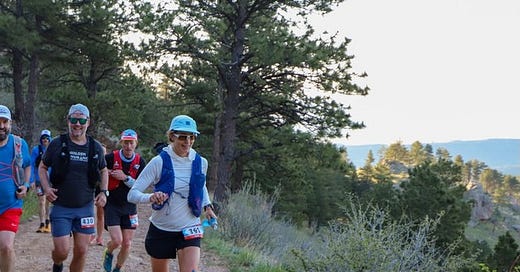

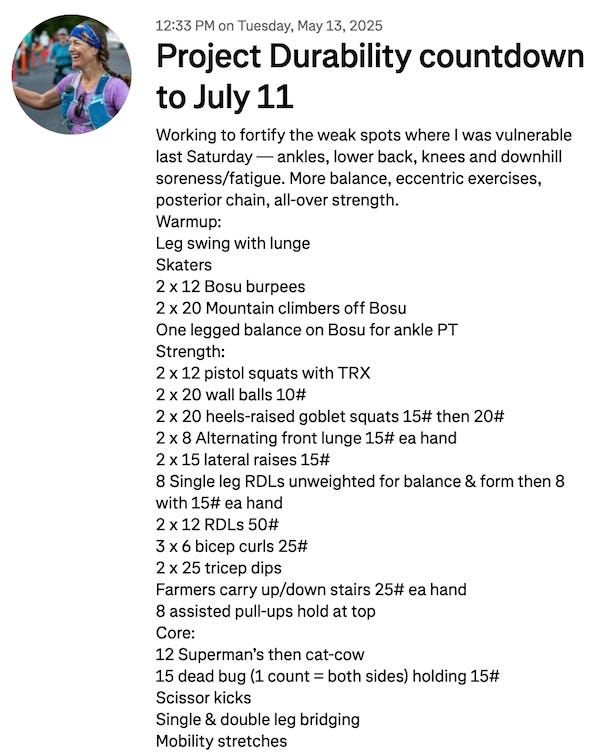
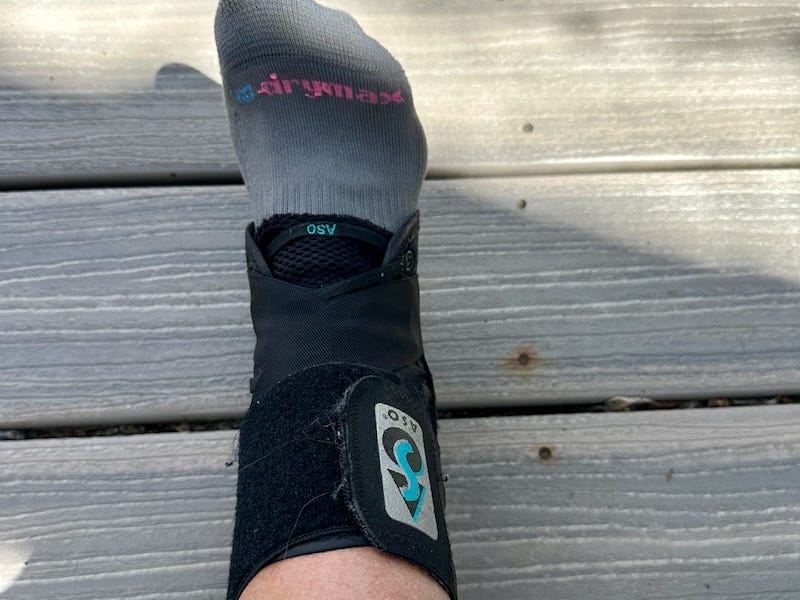
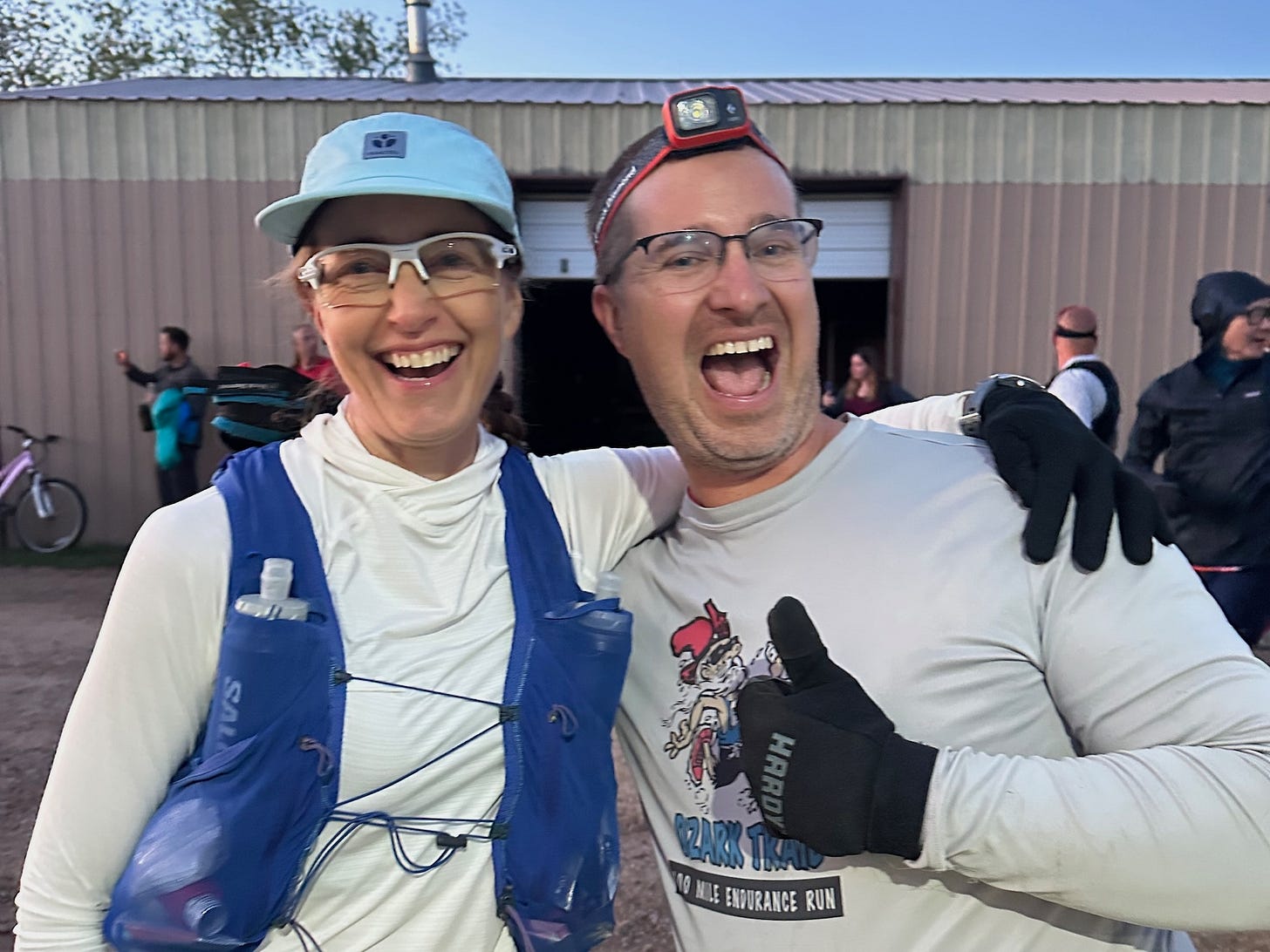
This was interesting to me. The strength work looks great. I'm doing a lot more weight training since my objectives have changed from running long distances to long approaches in the mountains with a heavy backpack, and then climbing the mountains with the climbing gear in the heavy backpack. You might want to check out Training for the New Alpinism by Steve House (the same guy who wrote Training for the Uphill Athlete). I think the strength programs would transfer well to Hardrock.
It's so fascinating that you wrote on durability, as I was just deeply thinking lately "if anything, durability is a word that describes me, physically and mentally". Yes, fully aware of the difference with endurance. Durable and resilient, getting through life's shit, and through miles and miles. Turning around, from Canyons 100k, straight back to training with over 100 mpw and lots of vert, running a 50k in the middle of it, and keep plowing through. I'm grateful for this weird gift, and don't take it for granted, mindful I can lose it any moment. I feel urgency to use my durability, because wild things (like an accident and a surgery 2.5 years ago) can force me to stop. In some odd way, I don't want to "spread it like OB, thinly, but longer". I want to press on, use it, and when it's done and over, rethink other options.
Kudos on knowing what YOU need. On the deliberate fueling (my other weird prop). On creating a self-driven program to tend to your weaker points and focusing on that, rather than dwelling. Mind is a powerful thing. Rooting for you and your long awaited Hardrock!